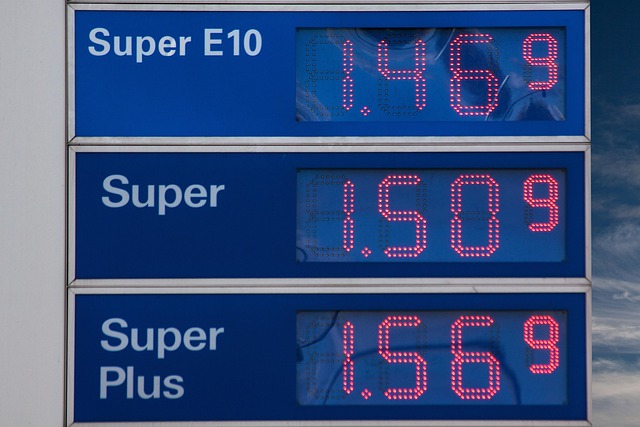June 20, 2025 – The price of oil is always changing. Many people want to know if it will go up or down in the coming months. Experts study different factors to predict oil prices. These include supply, demand, economic growth, and global politics.

In this article, we will look at the latest Oil Price Forecast and explain what affects oil prices. We will also share expert opinions and trusted sources for more information.
What Is the Current Oil Price?
June 20, 2025 – The global oil market remains volatile as experts debate whether crude oil prices will climb higher or drop in the coming months. With Brent crude currently trading around $85 per barrel and WTI near $82, investors, businesses, and consumers are closely watching the Oil Price Forecast for signs of market direction.
This in-depth analysis explores the key factors influencing oil prices, including supply-demand dynamics, geopolitical risks, economic trends, and the shift toward renewable energy. We’ll also examine expert predictions and what they mean for your wallet and investments.
Current Oil Market Overview
As of mid-2025, global oil prices are moderately high but stable. Here’s a quick snapshot:
- Brent Crude: $85.20 per barrel
- WTI Crude: $82.50 per barrel
- OPEC Basket Price: $83.75 per barrel
Live oil price tracking is available on:
Oil Price Forecast: Key Factors Influencing the Market
Several major elements will determine whether oil prices rise or fall in 2025. Let’s break them down:
1. Global Oil Demand Trends
Demand for crude oil is rising, particularly in emerging economies. The International Energy Agency (IEA) estimates a 1.5 million barrel per day (bpd) increase in global demand for 2025. Key drivers include:
- China’s Economic Recovery: After a slowdown, China’s manufacturing and transportation sectors are rebounding, pushing oil demand higher.
- India’s Growing Energy Needs: With rapid urbanization, India’s fuel consumption is at an all-time high.
- U.S. & Europe: Steady industrial activity and travel demand keep oil consumption stable.
However, as noted in WealthLark’s market recovery analysis, economic slowdowns could dramatically alter this trajectory. Will the Market Recover in 2025?
2. Oil Supply & Production Cuts
Supply plays a crucial role in the Oil Price Forecast. Major factors include:
OPEC+ Production Policy
- OPEC and its allies (OPEC+) control about 40% of global oil supply.
- In 2024, OPEC+ extended voluntary production cuts to stabilize prices.
- If they decide to increase output later in 2025, prices could decline.
U.S. Shale Oil Boom
- The U.S. is now the world’s top oil producer, thanks to shale drilling.
- If American oil companies ramp up production, global prices may face downward pressure.
Related WealthLark resource: For investors considering energy stocks, see our guide on Which Stocks Will Double in 2025?
3. Geopolitical Risks & Supply Disruptions

Political instability in key oil-producing regions can trigger price spikes:
- Middle East Tensions: Conflicts in the Red Sea or Persian Gulf could disrupt shipments.
- Russia-Ukraine War: Sanctions on Russian oil still affect global supply chains.
- Venezuela & Iran: U.S. sanctions on these nations limit their oil exports.
Any escalation in these regions could push oil prices above $90 per barrel.
4. Economic Growth vs. Recession Fears
- Strong Economy = Higher Oil Demand: If major economies grow, oil consumption rises.
- Recession = Lower Demand: Economic downturns reduce fuel use, leading to price drops.
The IMF’s 3% global GDP forecast suggests stable demand, but recession risks persist. As explored in WealthLark’s Complete Wealth Building Guide, energy investments require careful diversification.
5. The Rise of Renewable Energy & EVs
Electric vehicles (EVs) and green energy are reducing oil dependence:
- EV Sales Growth: EVs now make up 18% of new car sales globally, reducing gasoline demand.
- Solar & Wind Energy: Many countries are shifting to renewables, cutting oil use in power generation.
This trend could slow oil price growth in the long term.
Source: IEA Global EV Outlook
Expert Oil Price Forecast for 2025
Financial institutions have mixed predictions:
Bullish Forecasts (Prices Rising)
| Analyst | Prediction | Reason |
|---|---|---|
| Goldman Sachs | $90-$95 by late 2025 | Supply shortages |
| Bank of America | $88-$92 range | Strong demand |
Bearish Forecasts (Prices Falling)
| Analyst | Prediction | Reason |
|---|---|---|
| JPMorgan Chase | $75-$80 range | Weak demand |
| Citigroup | Could drop below $75 | U.S. shale boom |
Latest market analysis: Reuters Oil News
How Oil Prices Affect You
1. Gasoline & Transportation Costs
- If oil hits $90, expect $4.50+/gallon gas in the U.S.
- Airfare and shipping costs will also rise.
2. Inflation & Consumer Prices
- Higher oil prices increase the cost of plastics, chemicals, and food transport.
- Central banks may keep interest rates high to fight inflation.
3. Stock Market Impact
- Oil company stocks (Exxon, Chevron) rise with oil prices.
- Airlines and trucking companies suffer from high fuel costs.
Investment Strategies for 2025
If Prices Rise:
- Buy oil stocks (Exxon, Shell)
- Invest in energy ETFs (XLE, USO)
If Prices Fall:
- Consider shorting oil futures
- Shift to renewable energy stocks
For traders: Investing.com Oil Futures
Final Oil Price Forecast & Recommendations
Most analysts expect 2025 oil prices to range between $75 and $95 per barrel, depending on:
✅ OPEC+ production decisions
✅ Global economic growth
✅ Geopolitical risks
✅ EV adoption rates
Key Takeaways:
- Short-Term (Next 6 Months): Prices may rise to $88-$90 due to summer demand.
- Long-Term (Late 2025): Prices could drop if renewables grow faster.
For real-time updates:
Oil Price Forecast 2025: 15 Key FAQs Answered
1. What’s the current oil price in 11 July 2025?
As of 11 July 2025, Brent crude trades at $85.20/barrel and WTI at $82.50. Prices fluctuate daily based on market conditions.
2. What’s the average oil price prediction for 2025?
Most analysts predict an average range of $75-$95/barrel, with potential spikes to $100 if supply disruptions occur.
3. Which factors could make oil prices rise?
- OPEC+ production cuts
- Middle East conflicts
- Strong demand from China/India
- Weak US shale output
- Dollar depreciation
4. What could cause oil prices to fall?
- Global recession
- Increased US shale production
- Faster EV adoption
- OPEC+ output increases
- Successful Iran nuclear deal
5. How do oil prices affect stock markets?
Energy stocks (XOM, CVX) rise with oil prices, while airlines and transport stocks typically fall. See our Stock Market Analysis for details.
6. What’s OPEC’s role in oil prices?
OPEC+ controls 40% of global supply. Their 11 July 2025 meeting maintained production cuts, supporting current price levels.
7. How does US shale affect oil prices?
The US now produces 13 million bpd. Increased shale output could push prices down by $5-$10/barrel.
8. What’s the breakeven price for US shale?
Most shale producers need $60-$70 oil to profit. Below $60, production typically declines.
9. How do interest rates affect oil prices?
Higher rates strengthen the dollar, making oil more expensive globally. The Fed’s current 5.25% rate caps price growth.
10. What’s the best oil investment for 2025?
Consider:
- Oil majors (XOM, SHEL)
- Energy ETFs (XLE)
- Oil futures (CL1)
For picks, read Stocks That Could Double.
11. How do I hedge against oil price swings?
- Energy sector diversification
- Commodity futures
- Alternative energy exposure
Learn strategies in our Wealth Building Guide.
12. What’s the long-term oil price outlook?
Beyond 2025, prices may decline as EVs capture 25%+ of auto market and renewables grow.
13. How do oil prices impact inflation?
Every $10 oil increase adds 0.4% to global inflation, affecting central bank policies.
14. What’s the best time to buy oil stocks?
When:
- Prices dip below $75
- OPEC announces cuts
- Geopolitical risks emerge
Track opportunities via Market Recovery Analysis.
15. Where can I track real-time oil data?
Top sources:
Pro Tip: For tax-efficient energy investing, see our Tax Planning Guide.